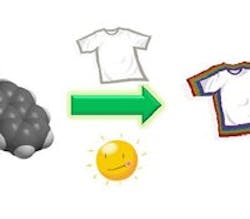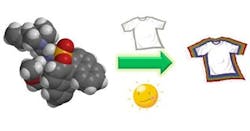Fabric Simplifies Production of Chemical Compounds
Immobilizing an organic catalyst on a nylon fabric can simplify the production of chemical compounds, e.g., avoiding the need to dissolve and then recover the catalyst as now is required in some syntheses of pharmaceutical ingredients, report researchers at the Max-Plank-Institut für Kohlenforschung in Mülheim an der Ruhr, Germany. In addition, the textile provides greater surface area than other supports, and is flexible, safe, inexpensive and easy to transport, they say. "Our method enables the low-cost production of long-term functionalized textiles without causing any pollution," notes researcher Jiwoong Lee.
The immobilization process, developed in collaboration with scientists from the Deutsches Textilforschungszentrum in Krefeld, Germany, and Sungkyungkwan University, Suwon, South Korea, involves applying the catalyst to the fabric and then irradiating the textile with ultraviolet light for no more than five minutes (Figure 1).
Figure 1. Catalyst is applied to fabric, which then undergoes a few minutes of irradiation with ultraviolet light.
Source: Jiwoong Lee, Max-Planck-Institute für Kohlenforschung.

